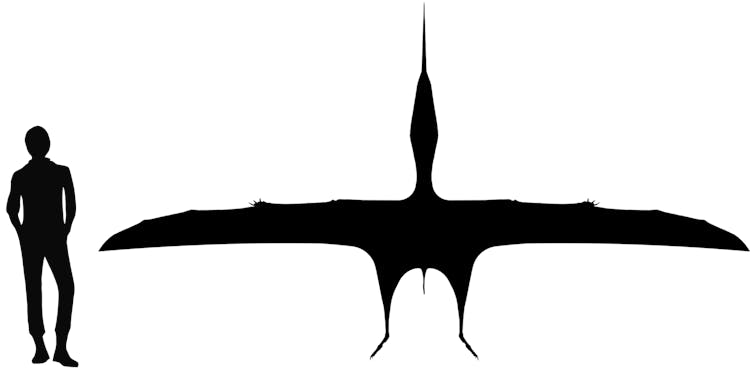


Thalassodromeus sethi is a name that means “Seth’s sea-runner”, with Set or Seth being the Egyptian god of storms and chaos. The whole genus name is a relative misnomer given that it might not have had anything to do with hunting over the ocean.
In fact, it is more likely to have been a powerful hunter of small animals on land, using its speed and maybe a few devastating pecks with its spear-like beak to dispatch its prey.
This seems like a short-necked version of the traditional azhdarchid, more of a running predator. Or else, it might have been an omnivore, a generalist taking both plant matter and animals. It was described in 2002 by Alexander Kellner and Almeida Campos and their papers called it a skim-feeder. This idea has been ascribed not just to thalassodromids but to other piscivorous pterosaurs as unrelated and far apart in time as Pteranodon and Rhamphorhynchus.
In reality, none of these animals had any adaptations for skim-feeding. Today, the seabird known as the black skimmer (genus Rhynchops) is the only vertebrate to specialize in this feeding method. Its lower jaw is immensely long and it has many special muscular adaptations to catching food in this manner.
It essentially entails dragging its lower jaw through the water while still on the wing. The bird’s neck also needs to be strong and flexible enough to allow its lifestyle.
Plus, their entire lifestyle means that a great amount of impact runs through their neck and head while fishing and their muscles are adapted to ensure a lack of stress.
Piscivorous pterosaurs did not have these adaptations and Thalassodromeus was certainly not one of them.
This creature had a large wingspan stretching a little over 5 meters across. It and Tupuxuara are the only two thalassodromids.
They existed for a brief episode of time and vanished just as fast, leaving just their fossil bones. These fossils come from the Santana Formation in Brazil’s Araripe Plateau, at least 108 million years ago.
Its crest was much larger than that of the related Tupuxuara, and backswept, taking up a massive part of the animal’s skull.
